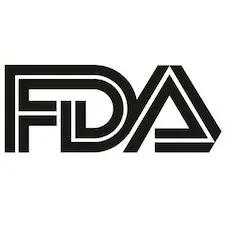News
Article
Semaglutide Shows Promise, Reduces UACR in Nondiabetic Kidney Disease
Author(s):
Key Takeaways
- Semaglutide significantly reduced UACR by 52.1% in patients with obesity and nondiabetic CKD over 6 months.
- The trial involved 101 participants, with a mean age of 56 years, and highlighted semaglutide's renal benefits.
New research indicates semaglutide reduced albuminuria and body weight in CKD patients without diabetes, highlighting its potential renal benefits.
Hiddo Heerspink, PharmD, PhD
Credit: George Institute for Global Health

New research suggests semaglutide (Ozempic) could prove useful as a treatment for management of chronic kidney disease (CKD) without diabetes.
A 6-month trial comparing use of semaglutide 2.4 mg against placebo therapy in patients with obesity and nondiabetic CKD, results suggest use of the GLP-1 receptor agonist was associated with a placebo-corrected 52.1% reduction in urine albumin-to-creatinine ratio (UACR), which investigators purport should support further exploration in additional clinical trials.1,2
“In this investigator-initiated clinical study, we assessed whether the body weight–lowering drug semaglutide can also protect the kidney in patients with CKD. We found that 6 months’ treatment with semaglutide at 2.4 mg per week reduced albuminuria, improved blood pressure control, reduced body weight and body circumference in patients with CKD and obesity,” said corresponding author Hiddo J.L. Heerspink, PhD, PharmD, of University Medical Center Groningen, in The Netherlands.2
Few medical therapies have ever permeated the public consciousness and commanded the attention of medical professionals in the same manner or fashion as semaglutide in recent years. Less than a decade ago the agent was relegated to a role primarily for its antihyperglycemic properties, but the GLP-1 receptor agonist is now more often likened to a panacea, as revelations surrounding the cardiovascular and, now, renal benefits become apparent.1,3
Presented by Heerspink at the American Society of Nephrology’s Kidney Week 2024 and simultaneously published in Nature, the study was an investigator-initiated, placebo-controlled, double-blind clinical trial designed to evaluate the safety and efficacy of semaglutide 2.4 mg among patients with obesity and nondiabetic CKD. The primary outcome of interest for the trial was UACR at week 24.1,2
For inclusion patients needed to be 18 to 75 years of age with CKD and a body mass index of at least 27 kg/m2. Per trial design, CKD was defined as an eGFR of at least 25 mL/min/ 1.73m2 and UACR of 30 to 3500 mg/g.1
In total, 101 patients were recruited and underwent randomization, with 50 receiving placebo and 51 receiving semaglutide. The cohort had a mean age of 56 (SD, 12) years, 40% were female, and 91%) participants were White. At baseline, the cohort had a mean eGFR estimated with creatinine (Cr-eGFR) of 65 (SD, 25) mL/min/1.73m2, a median UACR of 251 mg/g (IQR, 100 to 584), and the mean BMI was 36.2 (SD, 5.6) kg/m2.1
Among this study cohort, the most common kidney disease diagnoses were chronic glomerulonephritis (25%) and hypertensive nephropathy (27%). Investigators pointed out ACE inhibitors or ARBs were used by 87% of the cohort and SGLT2 inhibitor use was recorded for 19% of participants.1
Upon analysis, results indicated the geometric mean percentage change from baseline at week 24 was 7.4% (95% confidence interval [CI], −8.7 to 26.2). Among the semaglutide arm, the geometric mean percentage change from baseline was −48.6% (−60.9, −32.3), which corresponds to a placebo-corrected geometric mean change of −52.1% (95% CI, –65.2 to −34.1; P < .0001).1
Investigators highlighted use of semaglutide was associated with decreasing UACR at each up-titration step, with the full effect present at week 20, which was 5 weeks after uptitration to the 2.4 mg once-weekly dose. Investigators also noted this effect was sustained until week 24 and remained present 4 weeks after the discontinuation of semaglutide.1
Additional analysis of secondary outcomes revealed no statistically significant difference in Cr-eGFR between the semaglutide and placebo groups was observed at week 24 (mean difference, −1.1 mL/min/1.73m2; 95% CI, −4.8 to 2.6; P = .57). Investigators called attention to an initial decrease in Cr-eGFR at week 8 of the trial, but values in the semaglutide group returned to baseline and there was no difference at week 24.1
Further analysis demonstrated use of semaglutide was associated with placebo-corrected changes from baseline in body weight and waist circumference of −9.1 kg (95% CI −11.0 to −7.2; P <.0001) and −4.4 kg (95% CI −8.4 to −0.3; P = .04), respectively, at week 24. However, investigators called attention to results suggesting there were no correlations observed between changes in body weight and eGFR during 24-week treatment with semaglutide regardless of whether eGFR was estimated with creatinine or cystatin C or measured with iohexol clearance.1
“Future studies are needed to assess the long-term efficacy and safety of semaglutide in reducing the risk of kidney failure in these patients," Heerspink added.2
References:
- Heerspink HJ, Apperloo EM, Jonas N, et al. Effects of Semaglutide on Kidney Parameters in Patients with Obesity and Nondiabetic CKD. Presented at American Society of Nephrology Kidney Week 2024. San Diego, CA. October 23-27, 2024.
- American Society of Nephrology. High-Impact Clinical Trials Generate Promising Results for Improving Kidney Health: Part 1. Newswise. October 25, 2024. Accessed October 25, 2024. https://www.newswise.com/articles/high-impact-clinical-trials-generate-promising-results-for-improving-kidney-health-part-1.
- Campbell P. Semaglutide: The drug of today and a steppingstone to Tomorrow. HCP Live. December 6, 2023. Accessed October 25, 2024. https://www.hcplive.com/view/semaglutide-drug-today-steppingstone-tomorrow.





